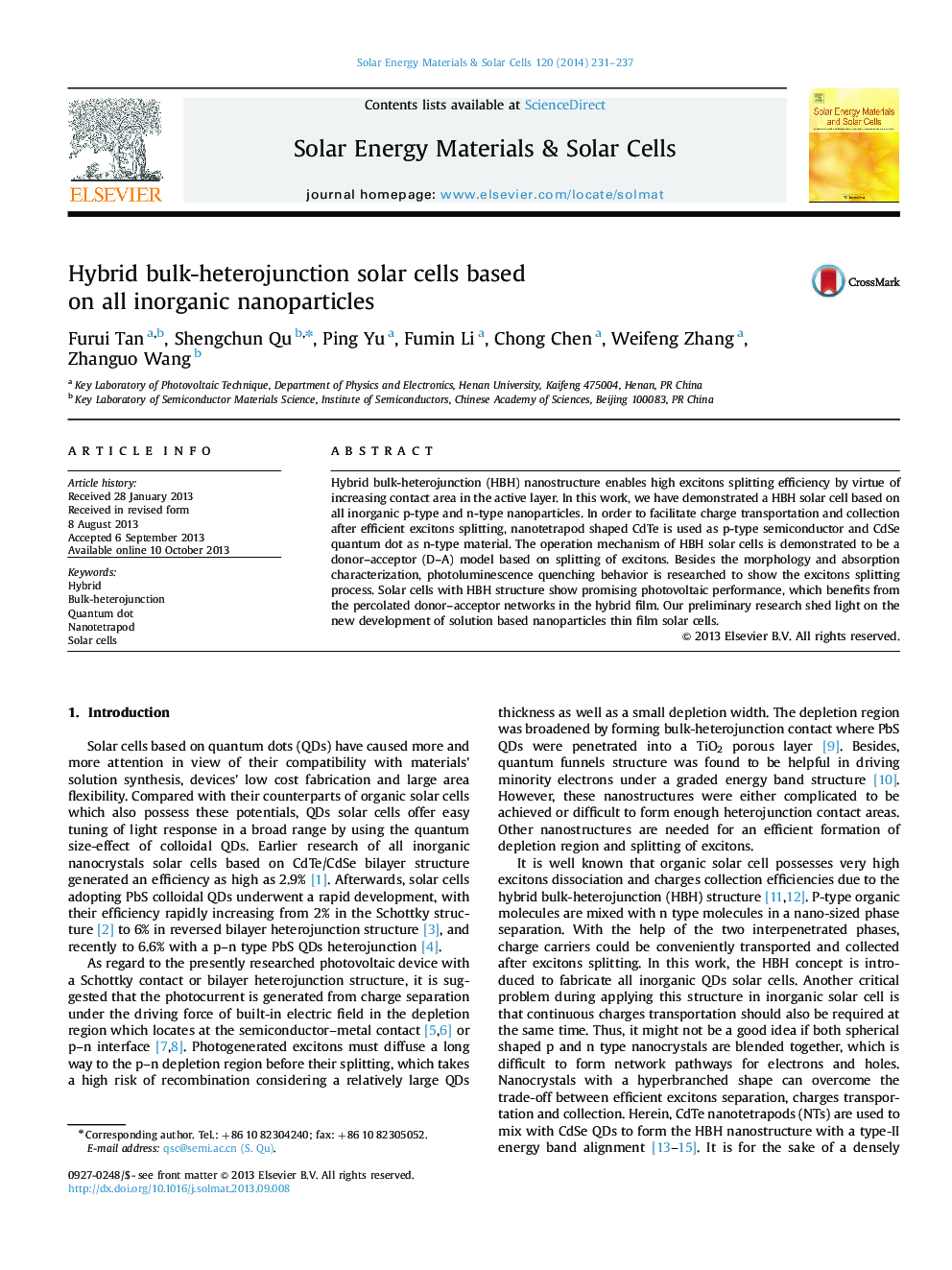| Article ID | Journal | Published Year | Pages | File Type |
|---|---|---|---|---|
| 10248718 | Solar Energy Materials and Solar Cells | 2014 | 7 Pages |
Abstract
Hybrid bulk-heterojunction (HBH) nanostructure enables high excitons splitting efficiency by virtue of increasing contact area in the active layer. In this work, we have demonstrated a HBH solar cell based on all inorganic p-type and n-type nanoparticles. In order to facilitate charge transportation and collection after efficient excitons splitting, nanotetrapod shaped CdTe is used as p-type semiconductor and CdSe quantum dot as n-type material. The operation mechanism of HBH solar cells is demonstrated to be a donor-acceptor (D-A) model based on splitting of excitons. Besides the morphology and absorption characterization, photoluminescence quenching behavior is researched to show the excitons splitting process. Solar cells with HBH structure show promising photovoltaic performance, which benefits from the percolated donor-acceptor networks in the hybrid film. Our preliminary research shed light on the new development of solution based nanoparticles thin film solar cells.
Related Topics
Physical Sciences and Engineering
Chemical Engineering
Catalysis
Authors
Furui Tan, Shengchun Qu, Ping Yu, Fumin Li, Chong Chen, Weifeng Zhang, Zhanguo Wang,
